Performing well out of the gate as a rookie NFL offensive lineman often proves to be a difficult task, yet players such as Creed Humphrey and Quenton Nelson beat the odds.
How and why have they been successful? We’ll dive into that in this article, looking specifically at rookies and second-year offensive linemen from 2018-2022 and excluding “no plays” — such as those negated by penalty.
We’ve evaluated offensive linemen in other ways already, including a dive into offensive line volatility this past year.
How does scheme affect offensive linemen?
We previously looked at scheme fit for offensive linemen in the 2022 NFL Draft. Using this research as a basis, we know scheme does not correlate from college football to the NFL. The general takeaways from this research were that when evaluating linemen, evaluating them as individual players outweighs their potential fit to a team’s scheme.
This article homes in on the 10 highest-graded rookie offensive linemen from 2018-2022, and then we looked at if the scheme they were drafted into fit their scheme in college. Specifically, we examined screen rate, number of pass rushers and number of players in the box.
Screens
Screens are used at roughly the same rate in college compared to NFL. From 2018-2022, the screen rate was around 5% at both levels.
Among the 10 highest-graded rookie linemen in the five-year span, Los Angeles Chargers tackle Rashawn Slater recorded the biggest difference in his offensive grade on screens from his last year in college to his rookie NFL season. He earned a 65.2 grade on screens in his first year with the Chargers, compared to an 84.4 grade in his final year at Northwestern.
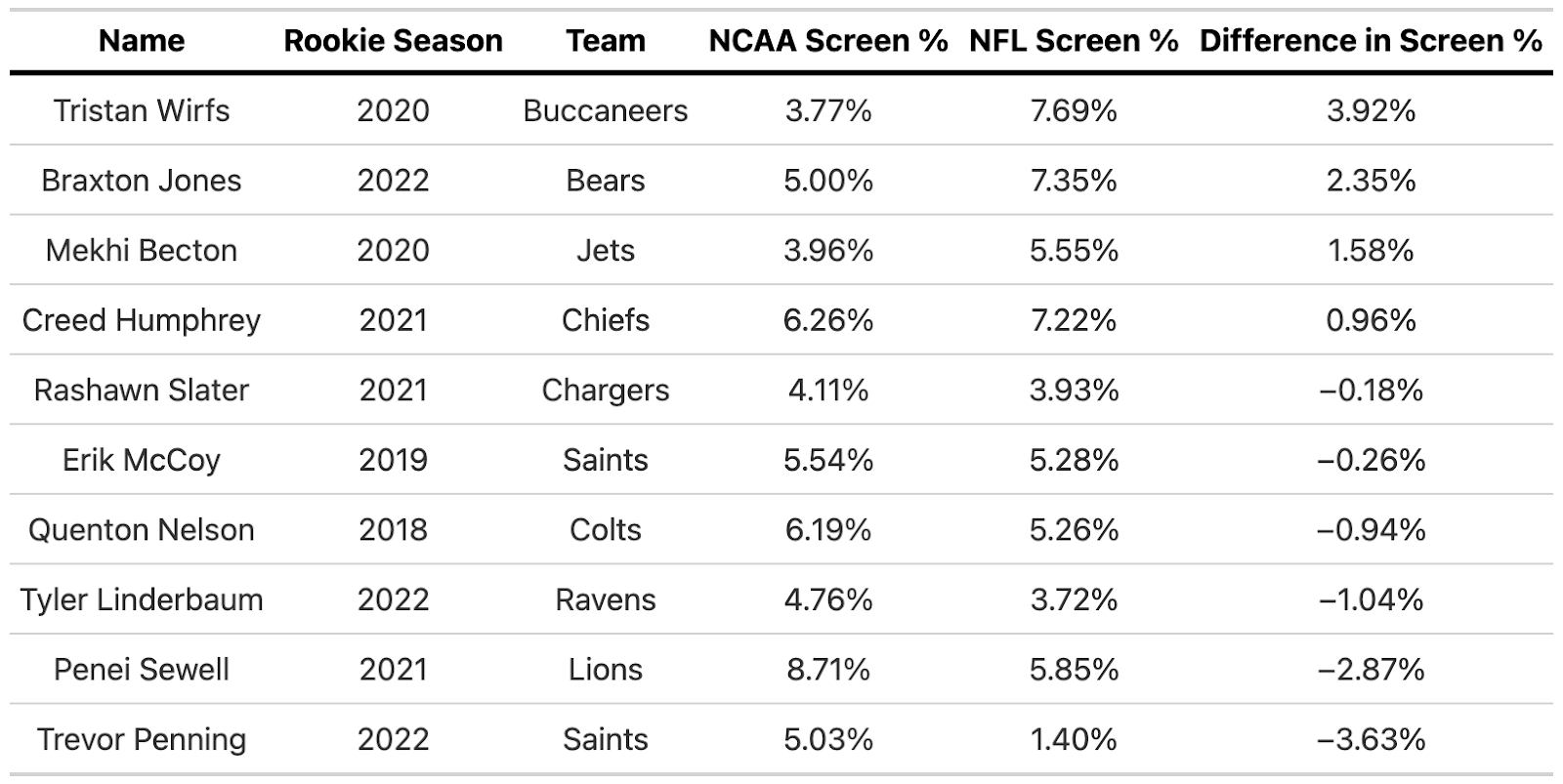
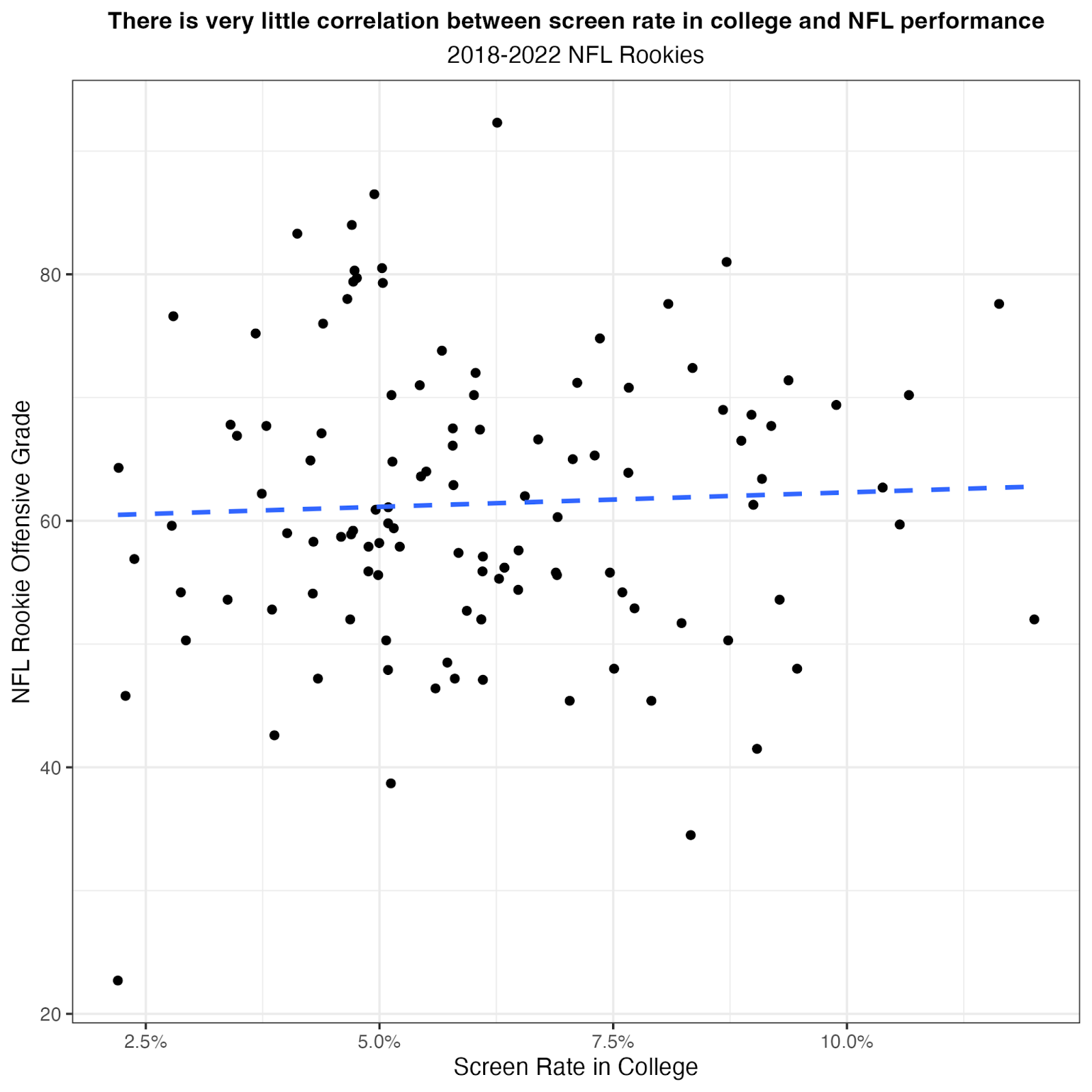
Pass Rushers
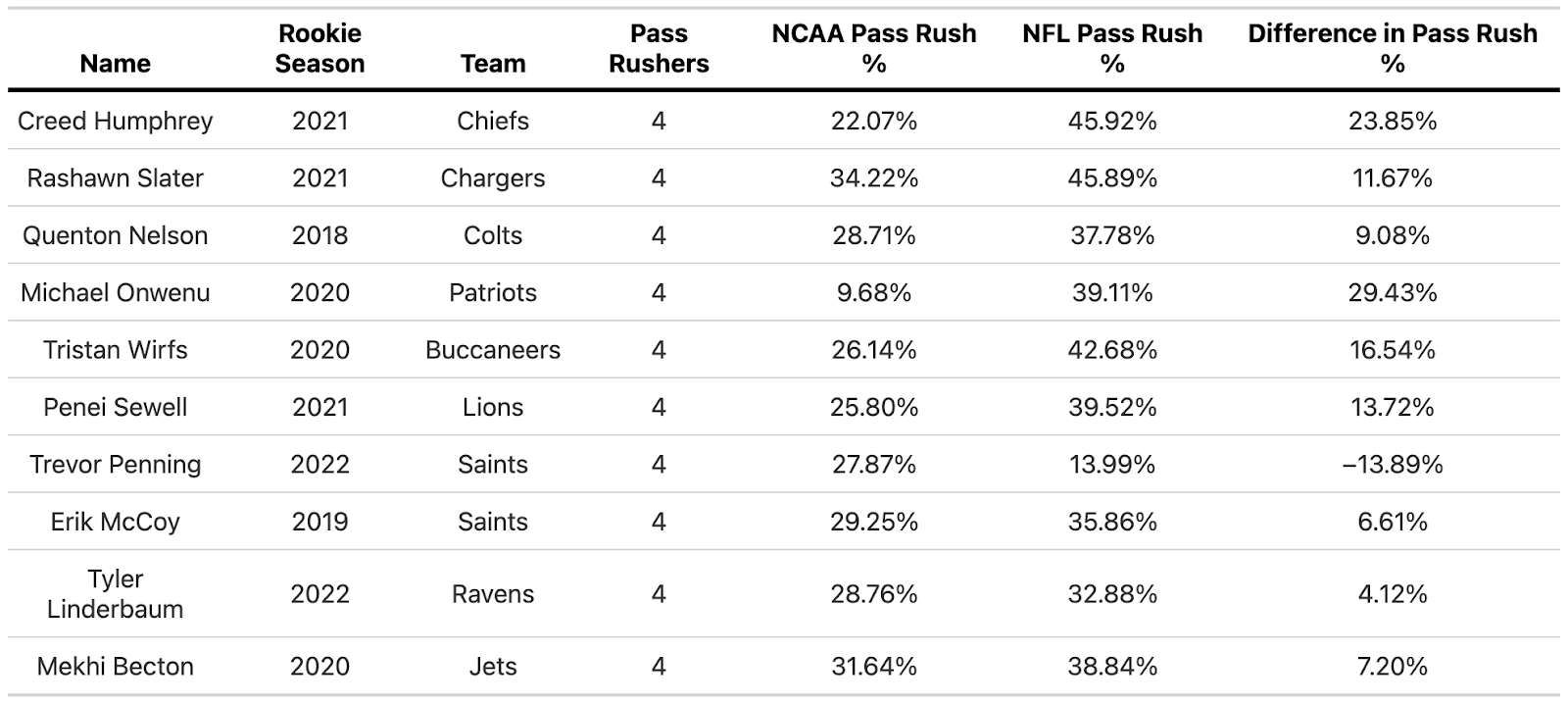
The table above shows the difference in the four-man pass-rush rate for each player between NFL and college. From 2018-2022, four pass rushers were used much more commonly in the NFL (24% vs. 35%), while two and three pass rushers were used more in the NFL (0.08%, 2.81% vs. 0.19%, 6%).
All of these players except Trevor Penning had to adjust to a higher rate of four pass rushers in the NFL.
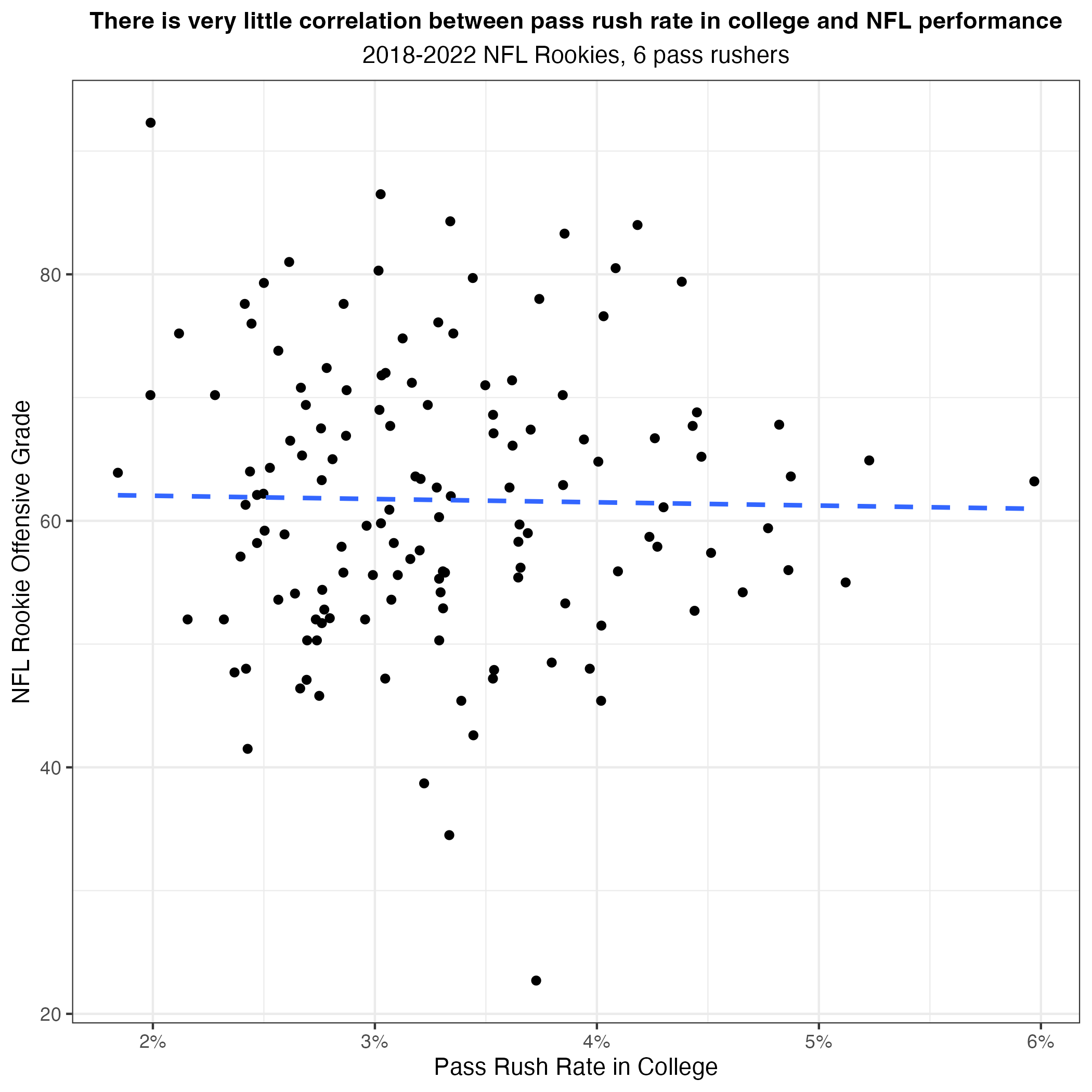
Players in the Box

Linemen also have to adjust to players moving in and out of the box from play to play. From 2018-2022, the rate of eight-man boxes in the NFL was 16%, while it was 12% in college.
Although Rashawn Slater played against eight men in the box at a higher rate in the NFL, he still earned the third-highest offensive grade among rookies from 2018-2022 on those plays (90.5). Tyler Linderbaum was right behind him in 2022 with a fourth-ranked grade of 85.5.
Quenton Nelson performed similarly against six men in the box. He recorded the highest offensive grade of any rookie from 2018-2022 when facing six in the box (87.2), so his high rate in college in that facet may have benefited him.
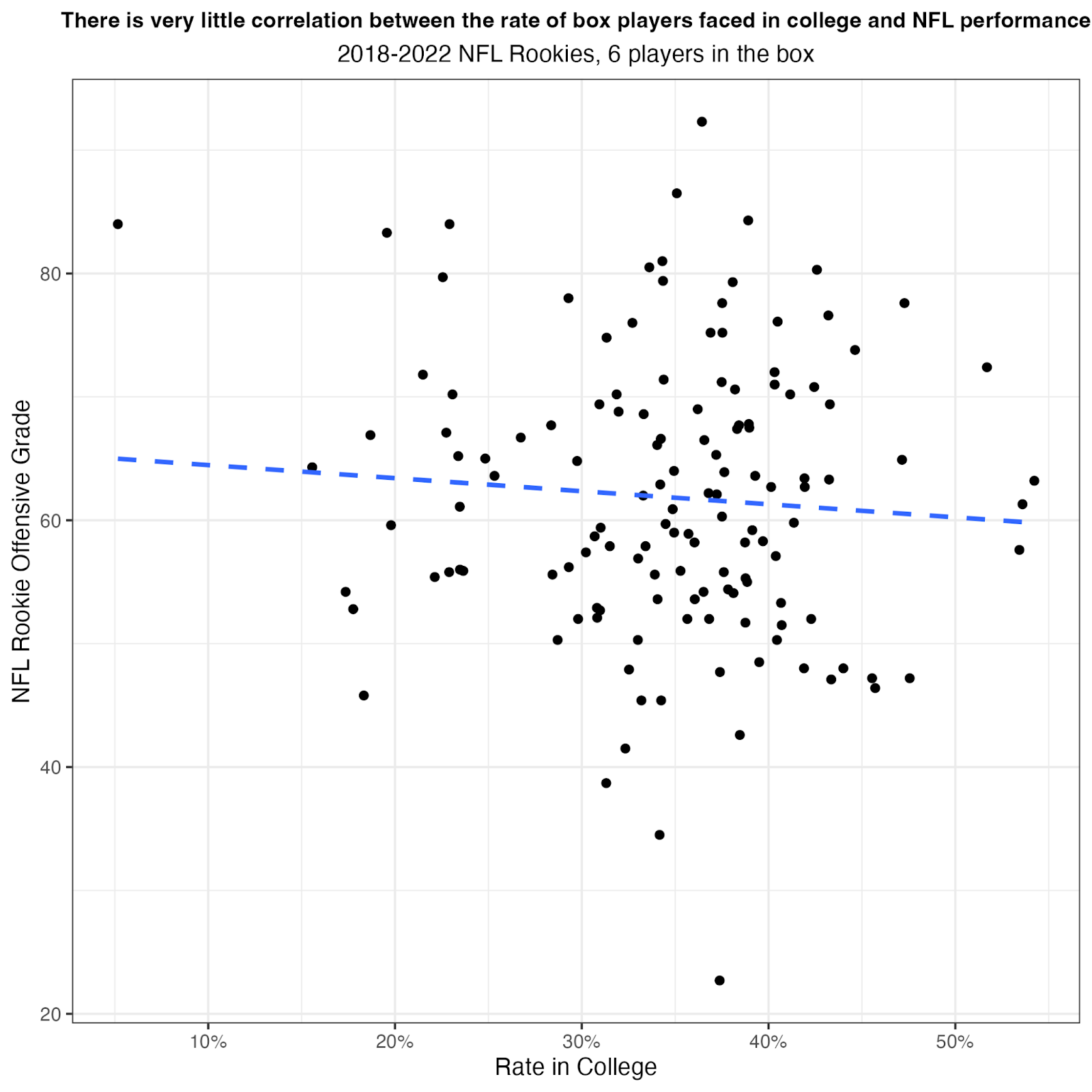
Do offensive linemen improve in their second years?
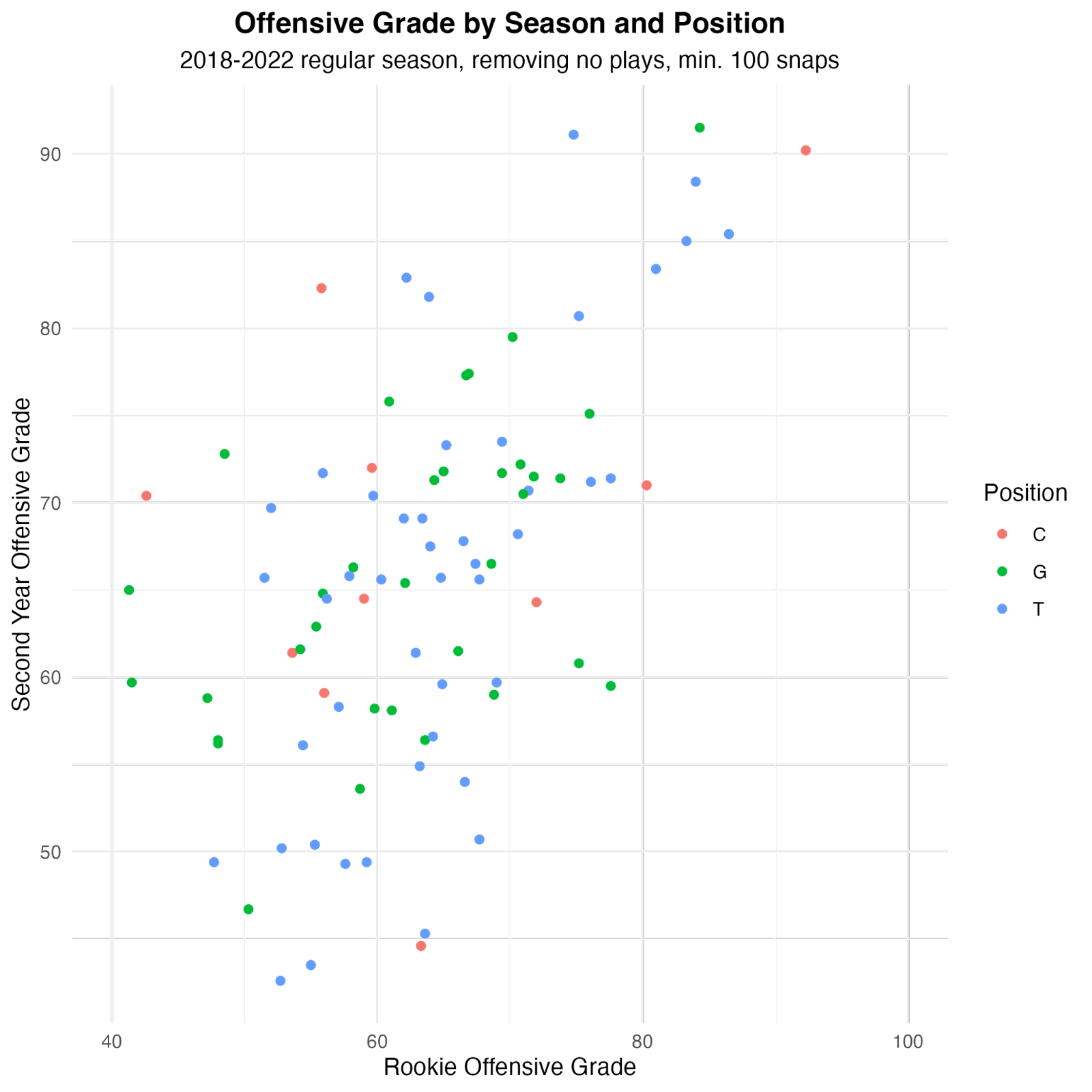
We found that, on average, offensive linemen in their second years post higher offensive grades compared to their rookie season, except for tackles. The table below illustrates this point.
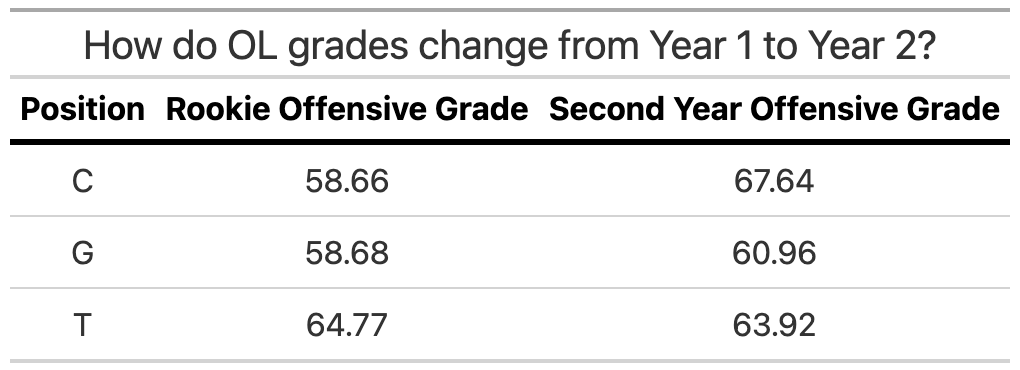
When looking at the correlations between Year 1 and Year 2 offensive grades by position, tackles had the strongest correlation (0.67), while centers had the lowest (0.38). However, we have to take into account sample size; there were only 17 rookie centers from 2018-2022, while there were 50 or more of both guards and tackles.
The correlation between Year 1 and Year 2 offensive grades for all offensive linemen was 0.56.
Conclusion
There are many aspects to a rookie offensive lineman’s improvement in Year 2. Scheme fit may be important, but a player’s talent is truly what makes the difference. If they can continue to perform at a high level and adapt their skills to different defenses, they will continue to be successful.
While there is a slightly positive correlation between screen rate, the rate at which they face different numbers of players in the box and the rate at which they face different numbers of pass rushers from college to the NFL, we’ve found that what linemen face in college is independent of what they face in the NFL. Their performance in the NFL is also independent of what they faced in college.
This makes sense. In the NFL, the best of the best are facing off. Linemen have to adjust to different defenses and elite pass rushers.
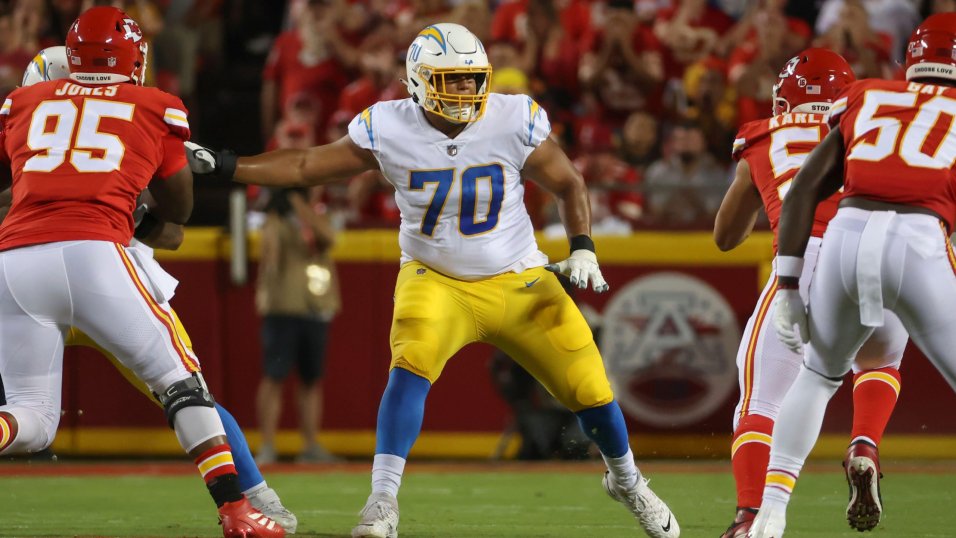

 © 2023 PFF - all rights reserved.
© 2023 PFF - all rights reserved.